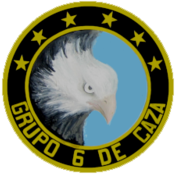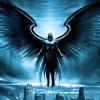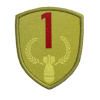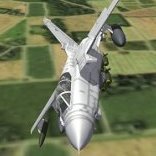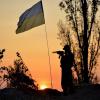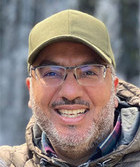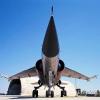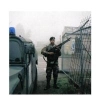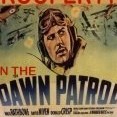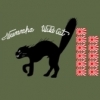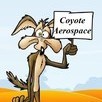Leaderboard
Popular Content
Showing most liked content on 03/27/2022 in Posts
-
12 points
-
9 points
-
7 points@Flogger23 your Su-15 looks marvellous. which / whose model is it ? do you release these skins ? required screenshot:
-
6 pointsLittle time at the moment - so some less time consuming interim project.
-
5 pointsHad a bolter because I forgot to put the hook down. Then again I came back in and caught the wire:
-
5 points
-
4 points
-
4 pointsHello everyone, I want to share some advice with anyone who is thinking about, has tried, or is in the middle of creating fictional nations for SF2 or any simulation. I have met and talked with various people who have attempted to do this. After going through errors and trials of writing a book for the fictional nations, I learned what appears to be the most practical ways of doing it. I want to share it so any of you who want to try it realize that it is not a difficult thing to do. Consider it as your new additional hobby. Creating the new nations led me to research the various countries based on where the fictional nations are located geographically. It involves learning the basics of the cultures, languages, and history. It opened my eye to the bigger world. It is one of the most enjoyable things I have done as the book grows. You are NOT required to do deep research and earn a degree in culture, history, or tongue. You can dip yourself into their world and get tastes of it by researching or watching youtube, unless you want to go further on certain parts, such as the cultures, history, or languages. It also depends on how much depth you want the nations to have. Some of the authors wish countries to have a lot of depth to immerse you with it. At the same time, some authors only want to give fictional nations a little deep so that the audience can fill the gap with their imagination, based on the amount of Depth, the author, gave it. TOOLS Writing a book makes it a fun hobby, and it is also beneficial to have as a reference for you to build the mods based on. Here are the following tools I used to work on the projects of creating fictional nations: - Microsoft Word (To create a book) - Microsoft PowerPoint (See note below) - GIMP - Paint Shop Pro (NOT required, since you can use GIMP for free. I use PSP to re-size the map while preserving the quality as possible.) - Microsoft Paint I will explain how and why I use each tool, so you can get an idea of how they can be helpful to you too. Microsoft PowerPoint = Besides Microsoft word, PowerPoint is the most helpful tool I ever used when copying and pasting from gimp, PSP, and Microsoft paint. It allows me to place certain materials along with other materials. At once, when it is done, by selecting all materials, you can copy and paste it into GIMP as a new image in one piece with transparent background. It is how many decals were designed with precise positioning. GIMP = It is the best free graphic design tool up to date. You can use it to create the skins, import the template (PSP), export .tga for SF2, and other valuable features. I highly recommend it if you want an alternative to PSP. Paint Shop Pro = I use it to enlarge the image to 4K or beyond while preserving the quality possible. The maps were made by enlarging them to 4,000 x 4,000 or more. Then reduce the size for PowerPoint and book. That is how you can have a high-quality picture. Just a warning, it will take up a lot of space when doing it. Microsoft Paint = I use it to quickly copy any image (square or rectangle shape only) and then paste it into a book if the formatting is messed up when copying from PowerPoint to Microsoft Word. If an image does not have four straight edges (Square or Rectangle), I use GIMP instead. Microsoft Paint takes a second to load up, paste from PowerPoint, and copy and paste into Word. Designing the nations Here are the most foundation of designing fictional nations: 1. The purpose of the fictional nations 2. What kind of conflict do they face? 3. The location of the nation’s geographically 4. The cultures, language, and history of the nations 5. The era they are based on 6. The evolution of the Nation’s map (from the birth to the target era) (1) The purpose of the fictional nations = By starting the project, ask yourself, “Why do you want to create the fictional countries? What kind of projects are you working on? At once, when you get this solid, you are ready to start from there. (2) What kind of conflict do they face? = Now, this is the essential part of the project; what type of conflict do you intend for the nations to face initially? When I wrote the book about Saad and Zafir, initially the way they were designed, they were meant to conflict with each other, based on their border and actions that caused them to be angry with each other as the primary point in the story. (3) The location of the nation’s geography = Once you determine the location of the countries you designed, it will be the critical point for the nation’s culture, languages, and history. You don’t have to be too specific or make too many depths on them, as stated before. It can be minimized and have the audience fill the gaps with their imagination when you have enough depth. It is ideal for keeping it simple yet enriched with stories and pictures. It can be as simple as having a few paragraphs with images on each page. They say that the picture speaks a thousand words. (4) The cultures, language, and history of the nations = Once the nation’s location is set, it is ideal to look at an existing country from the site for the cultures and language. For example, in my project, Saad is located where modern Eritrea is. Culturally Eritrea is Christian, Muslim, and a few others. According to Wikipedia, The language of Eritrea is Tigrinya, Tigre, Kunama, Bilen, Nara, Saho, Afar, Beja. Tigrinya, Arabic, English, and historically Italian serve as working languages. This is where I gave Saad the culture of being primarily Christian with their own government system in modern era. Saad used to be Monarchy with the king from early era. with a similar language of Eritrea as the starting point. And keep in mind, as you evolve, the stories, the core culture, language, and history of your designed nations will change. (5) The era they are based on = For the history part, it is best to trace back to when your nation was created and then trace it forward to the target era. For example, Saad being in place of Eritrea, I was looking through the ancient maps of the horn of Africa. I watched a video about the maps each year from the early to the modern era. This is a video where I created the history of Saad from: https://www.youtube.com/watch?v=-q_uCjQmoT4 This is how I designed the map from the 12th century to the 1990s, making Saad seem real and alive when the audience read the short history about Saad. Any nation without the past will appear to have a less immersive to it. (6) The evolution of the Nation’s map (from the birth to the target era) = When the delivery of the designed country to the target era is set, you can use GIMP to create the multilayers. Select the map to the default bottom layer, then use the 2nd layer to draw the country on top. That is how I do it when creating each era of the maps for all designed nations. This will also be useful for developing or modding terrains in SF2 or any other simulation. As stated before, it is best to expand the size of the map to high resolution, then use it from there. Designing the military and squadron Now that you have designed the nations being enriched with the stories, history, culture, languages, and maps. The next thing you will want to do is take your time to design the military branches. You determine the name of the military based on the government type of the nation and its history. In my project, Saad has four branches (The republic of Saad Air Force [ROSAF], The Republic of Saad Navy [ROSN], The Republic of Saad Army [ROSA], and The Republic of Saad Coast Guard [ROSCG]) while Zafir has three branches (Royal Zafir Air Force [RZAF], Royal Zafir Navy [RZN], and Royal Zafir Army [RZA]). There is also an aviation and ships/boats version for the Navy. There are also aviation and ground vehicle versions for Army. You can see how complicated it can be; hence take your time to design them all. The following steps are to design the squadron. Please note, for the sake of simplification, you only want to design the squadron, and then use simulation to assign them to any military branch you prefer in the simulation. You may not want to try to be too specfiic with which military branch they belong to, the number of aircraft they have, and the list goes on. This part may burn you out from the project. In my honest opinion, to make your nation look appealing by using their native language for the script for squadron too. You can create as many companies you want to; it is all up to your creativity. You will want to have a lot of fun with it! When you determine the number and name of each squadron, you will use it as a reference when designing their decals. Designing the flags, logo, and any decals Now that you have designed the nations, military, and squadron. The next thing you will want to do is take your time to prepare the flag. It is best to create it based on the most precious to the nations. This is what I wrote about the flag of various countries. This will give you an idea for your projects: Saad created their flag for the first time. The flag of Saad has two main symbols: blue star and African symbol known as Mmusuyidee. Mmusuyidee means “fortunate” and “lucky,” which have a similar meaning as “Saad” in Arabic. There are two primary colors: Navy blue and white. Navy blue represents the water. Water is one of the essential elements that give life to the world, including the people of Saad. White presents purity; one must have a pure heart and mind to have hope. The lion symbols the strength, justice, and bravery of the people of Saad. Dhahab Dynasty was created by the royal family with the name of Hilal. In Arabic, the name Hilal means Crescent moon. The name Dhahab also means “Gold.” It was used to express the country’s beauty as gold. As you can see, the flag of Dhahab contains a golden crescent moon. After designing the national flags, you take the following steps by creating each military branch’s standards, aviation insignia, and other decals. Do the same thing for the squadron decals. This will take a lot of time, and this is where your skills with graphic designs will grow. And also, do yourself a favor; when you use any materials from the internet, add the credits to where you get it. It may seem too much hassle, but this will save you from any potential problems when you share the project with the community online. Designing the military inventory The last step in the book is to choose various aircraft and vehicles for each military branch. It all comes how you design the nation and its military. Their history and stories determine which nations they get aircraft and vehicles from. And if the account permits it, the nation also can locally build the plane. Here is some advice from what I have learned about this part: - When naming aircraft, take a look at how each nation names its aircraft and vehicles historically. This will make your nation semi-realistic, making it more convincing and immersive. For example, Saad receives E.E. Lightning F.80 (F.6) in my project. Notice I use F.80 as an export number from the British for The Republic of Saad Air Force (ROSAF). It uses (F.6) to note which specific variant of Lightning it is based on. - For Locally built aircraft, use your nation’s native language. For example, in my project, Saad’s locally produced aircraft based on Israel Lavi, the aircraft name is S.A.I Anibesa SFG.1. S.A.I mean “Saad Aerouantical Industry), Anibesa is a romanization version of Tigrinya (ኣንበሳ), meaning “Lion.” SFG stands for “Saad Fighter and Ground attack.” There are many ways each country manages aircraft naming. It may seem complicated, so take your time to research and apply it to your nation’s military aircraft and vehicle. Feedback for your book Do NOT be surprised if you don’t like the input if you ever decide you want feedback. It is not to break your modding spirit. It is there as an opportunity for you to consider improving any aspect of your project. It may be friendly or not friendly. You can not please everyone. The point of the project is what makes you happy. It is your hobby. If it brings you joy working on this project, that counts. However, give yourself time and see how you can improve your book further. There were numerous times I got feedback that I did not like, and it helped me know what I did not see before. Hence, seeing other people’s perspectives may help you too. FINALLY, you just finished designing everything from the ground up. You have a book with tons of references to use as a foundation to build the mod project.
-
4 pointsCAS, and I can't find that SAM launcher..... And then I saw a smoke trail outta the treeline... Use the last of the rockets and get going.... Home in time for breakfast...
-
4 pointsWow wow wow . love the camo of the Marines plane in the second screenshot. Can help you in some way mate? Mandatory screen
-
4 points
-
3 points
-
2 pointsHello everyone, I am sharing what I am working on with the team. It is a slow project because we do it for the hobby. We are flowing along with it, and there is no ETA. Initially, I worked on Dhimar and Paran expansion pack without much research, which led me to do a project that made no sense. That was an opportunity for me to learn how to do it properly, especially in a semi-realistic way that makes sense. I decided to discontinue Dhimar and Paran expansion project because I didn't want to change the stories written by TW. Therefore, I want to honor his work. Thank the community and friends for inspiring me to work on an entirely new fictional nation that I can envision and bring into SF2. A friend of mine recommended I look into the Africa map, where the imaginary nations of Saad and Zafir come in. What took the longest time was actual research about the nations around the horn of Africa and the Arabian Peninsula and the ancient civilization around that area. The research on the language, cultures, and history was also involved. It taught me many new things, which opened me to Africa and the Arab world. This is how Saad and Zafir get an enriched history and depths with the cultures, languages, and where they come from. This led me from just making SF2 mods into writing a book. I never thought I would do it, yet I am doing it as a hobby. Then it came to me; this book is not just for SF2; it can be used for any simulation. It taught me how to be creative with the stories, including the graphic designs (flags, insignia, roundel, pilot badges, and other materials). After finishing the short history series about Saad and Zafir's ancestors, I can start focusing on finding the right aircraft for Saad and Zafir. It is intended that Saad and Zafir are truly unique to each other and the world of SF2. It won't be another classic "USA aircraft vs. Soviets Aircraft." Instead, they use various aircraft tied to Saad and Zafir history with connections to certain nations from Europe to the Middle East to Asia. They will still use some of the United States and Soviets aircraft, though. My friend has been a great teacher who taught me a lot about the military system and how they do things. I can make Saad and Zafir military semi-realistic with it, especially when being fictional nations. I intend to bridge the alternative world (SFAW) with this world in balanced ways. By the way, here is the information about the SFAW project: I will give you the brief background about Saad and Zafir. NOTE: I am NOT an expert with the language of Tigrinya. I am still looking for someone who knows the Tigrinya languages. I find them to be very interesting. It is intended that the language of Tigrinya for Saad is one of the native languages. That way, Saad can be fully immersive in the book and SF2. ሳድ (Saad) - (1920 – Present) الظافر (Zafir) - (1930 – Present) FAQs Cheers!
-
2 pointsInteresting to read how other people work :) For me its very interesting. i Use completely different programs for modding, making books drawing pictures. nice text thanks
-
2 pointsThank you! You are super cool too! I am looking forward to bring the book into SF2 world, so we can experience it. Cheers
-
2 pointsTrying to get the Cat outta the rain..... Litter mate speeding to catch up Ain't we a pair?
-
2 points
-
2 pointsGreat scenario, well done! With extensive modding (terrain, aircrafts, skins, ground objects etc) it could be a very good (if better) alternate Dhimar-Paran campaign pack.
-
1 point
-
1 point
-
1 pointawesome and huge project. especially across both TKs series, i havent heard of many huge mods for First Eagles take breaks as needed. people get burnt out working smaller projects, this one would rival most anything here currently when finally complete.
-
1 pointOK - Finally got it figured out - Went into my speaker settings and reset everything back to 'Factory' settings. Thanks again EricJ for your help. And thanks once again for all your outstanding additions to this series! Hope all is well, NIELS
-
1 pointOh that's what you mean... I never really touch the sound files outside of the game, unless it's in my current search for a better afterburner sound for the Super Hornet pack. But that aside maybe the update did pork the sound files. I think you'll need help from somebody else then as I don't mess with that stuff. I have Windows 11 and for the most part haven't had any issue listening to the sounds in the Sounds in the mod folder. As for the predone ones I haven't touched that.
-
1 pointFAC (I didn't know infantry talked to you, though I don't remember that from WoX either).doesn't exist in SF2 anymore, so there's no worry there. As for the rest I don't know, did you update your sound drivers? I mean I don't use wingman so I can't help you with that. Also what did you get? SF2 Complete? Or the separate installs? My sounds work fine as I have SF2 Complete.
-
1 pointLockheed Martin A-4AR Fightinghawk - 2nd Escuadrilla, Comando de la Aviación Naval Argentina, 1999
-
1 pointI hadn't realised Recon Wars was out already! Downloaded and installed now. It's definitely going to make Quirk flying more scary. Raine: A pleasure as always to read about your man's exploits. I always find myself being totally immersed in your unique blend of historical information and creative 'world-building'. Looking forwards to more. The tale of Charles A. Fairclough Part 2: March 24th - 25th, No. 10 Squadron R.F.C. Charles awoke the next morning to the faint drumming of rain upon the window, the drops shining crystalline in the brilliant amber of a sunrise in infancy reddening and breaking through the clouds. Sleepily he fumbled for his uniform. “I wouldn’t bother. We won’t be going up in that” O’Bannon mumbled from the other side of the room.Gratefully Charles fell back into bed, becoming distantly aware that he couldn’t recall the last time he’d been afforded such a luxurious morning rest. He certainly hadn't at Hendon - if nobody else forcibly roused him at Six O'Clock each morning, the excitement of a day's training would do the trick without fail. The Chateau remained tranquil until Nine O’Clock, as the more hungry and less-hungover officers began to emerge from their rooms in search of breakfast. By Three O’Clock the rain hadn’t died down, and so the drinks commenced. Charles took the opportunity to attempt to learn a little more about life as a pilot, but found himself becoming rather dejected by a swiftly-issued “We never talk shop in the anteroom, Fairclough”. In the evening, just before supper in the mess, a batman arrived to tell him that Captain Foss wanted to see him in his office on the northern end of the Chateau's third floor, which the Captain had selected so as to be best isolated from any other form of life. The furnishing was sparse - one large desk for the C.O., behind which the Captain reclined in a large leather armchair, a smaller desk for his adjutant, and several papers strewn out across the walls and a second desk - among which were a large map pinned to the wall depicting Number 10’s sector of the front and several silhouettes of allied and enemy aircraft. Dutifully Charles stood to attention in front of Foss. “You asked to see me, sir?” “Indeed. So, your first day yesterday. How did you find it?” “I enjoyed it, sir”. “Oh! did you really! Well I'll tell you what, the fun will wear off damned quickly. Now, you know what we do here, I hope?” “Photographic reconnaissance and artillery ranging, sir”. “That’s right”. The Captain rose from his desk, beckoning Charles over to the map. “You’ll be doing the afternoon show tomorrow, ranging for Number 5 battery down here at St. Vaast. Do you know the Clock Code?” “Yes, sir”. “Good, because we only have the one wireless transmitter and it’s about as useful as an ashtray on a bicycle. It’s in for repairs, so you'll need to use a signalling lamp to communicate with the battery. You’ll be flying for Mr. Owen, who is to be your regular observer from now on. He’s one of the better ones we’ve got, so pay attention to everything he tells you to do and, for god’s sake, don’t get him killed. It’s bad enough that we’d lose the machine without taking him along too. Is that clear?” “...yes, sir. Perfectly”. “Good. One more thing. You may have the afternoon show, but if I were you I wouldn’t get too tight tonight. You new chaps usually take about a month to stop being easy meat for the Hun, but you'll at least have some chance if you’ve got your wits fully about you. Dismissed”. No rain came the next morning, and so at One O’Clock Charles met with Captain Owen on the aerodrome. Together they climbed into their B.E. and lifted up into the vast, empty blue. It was a different machine to the one he’d flown the other day, and it climbed well. Soon Charles was flying at the feet of the cumulus-giants at six thousand feet, and the landscape below had become an intangible swirl of green, brown and white, mixed with precision on the vast palette of an anonymous artist. As it had done before, the front crept from the distant haze and rose up to greet Charles - as did the Archie. If Archie's efforts had been anger on his first flight, then today saw the guns below spitting nothing less than a deep, hateful vitriol. Charles gripped the control column with a new depth of anxiety among the chorus of dull thuds as around him the black, circular ghosts of just-exploded shells loomed with unspeakable malice, tearing ravenously at every section of sky save for the exact one he currently occupied. He didn’t know whether to be thankful or horrified, so he decided upon being both simultaneously. Captain Owen producing the signal lamp from his cockpit snapped Charles back into the task at hand, and he craned his neck to look for the response as Owen flashed his signal to the battery. Miles below, a rapidly-blinked message answered. Owen gestured for Charles to circle, and a moment later the first barrage landed, swiftly cutting a fresh line of craters into the blasted landscape of the front. Owen looked down at his map for a moment, then raised the lamp again. A second barrage tore into the earth, at which Owen threw up his arms in exasperation, before turning to Charles and shaking his head. He raised the lamp once more. The Archie vented its rage with renewed fervour... An hour later, Charles felt a surge of relief as the B.E’s wheels came gently down onto the grass at Chocques. He had no idea whether or not whatever it was that the English guns had spent half an hour shooting at had been hit, not that he particularly cared. He was far more interested in the more certain knowledge that the German Archie had missed what they’d spent the last half-hour shooting at. Stepping down from the cockpit, he breathed a sigh of relief, reaching into his pocket for his pack of cigarettes. “Not near the machine, please, sir” a mechanic said to him. “Hullo, Fairclough” O’Bannon greeted him, not looking up from his newspaper as Charles returned to their room and deposited his flying coat on the wall-hook beside his bed. “Good show?”. “Archie gave us a hell of a time”, Charles responded. “I didn’t know that you could get newspapers here”. “You can’t, normally. Ness just got back from leave. It’s a few days old”. “Anything interesting?” “Absolute rot. Care to see for yourself?” O’Bannon folded the newspaper and held it out to Charles. “No, thank you. I can guess. Something about America supposedly joining in at some point”. O’Bannon smirked. “Not this time. But isn't that pitifully wishful thinking, by the way? The average American has no interest in our European mess. They have it rather alright over there at the moment, comparatively speaking. Besides, how about this for a reason not to get involved. How many shells do you think Archie threw at you today?”. “What does that matter?” Charles asked, puzzled. “Humor me”, O’Bannon cooly responded, a thin smile appearing on his lips. His eyes glinted with a flicker that Charles had often recognised in his friends in England, the sign of an idea that had begun to grow and, in doing so, seemed to its originator to be ever-increasingly impressive and clever. “Okay,” Charles replied, “I’d say around fifty or sixty”. O’Bannon set the newspaper down. “Let’s assume it costs the Hun one hundred pounds, for talking’s sake, to produce one Archie shell. That would mean he's already seen fit to spend six thousand pounds, only in the last hour alone, on trying to murder you. Now think how many shells they must send up in a week, and how much that must cost them. It’s no bloody wonder America doesn't want to get involved”. “Absolutely right” Charles answered. “But although we might have to wait some time for the Yanks to make an appearance, I’m certainly not waiting a moment more for lunch to materialise. I'll see you downstairs”.
-
1 point
-
1 point
-
1 point
-
1 point
-
1 point
Important Information
By using this site, you agree to our Terms of Use, Privacy Policy, and We have placed cookies on your device to help make this website better. You can adjust your cookie settings, otherwise we'll assume you're okay to continue..


